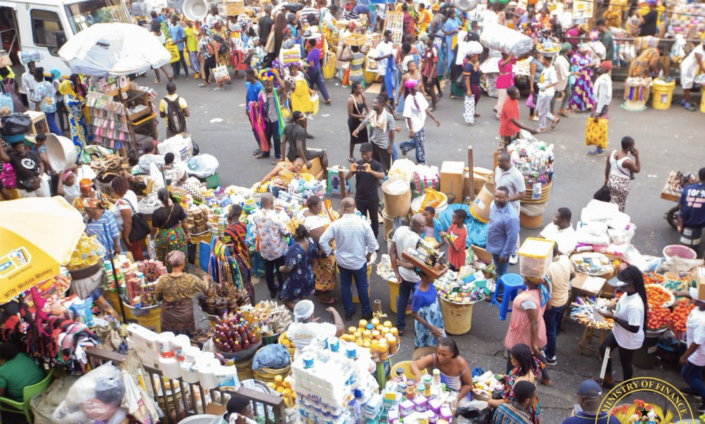The African Development Bank (AfDB) expects Ghana’s economy to expand by 4.5% in 2025, driven by robust mining sector performance, ongoing fiscal consolidation, and higher interest rates, according to its latest African Economic Outlook report released at the AfDB Annual Meetings in Abidjan, Côte d’Ivoire.
The report offers a deep dive into key economic indicators across member countries — covering GDP growth, inflation, fiscal balance, debt sustainability, and external accounts — while flagging potential risks to economic stability across West Africa.
Looking ahead, the AfDB projects Ghana’s GDP growth will climb further to 4.8% in 2026, underpinned by stronger macroeconomic fundamentals.
Diverging Forecasts
Ghana’s government has offered slightly more conservative figures. Finance Minister Dr. Ato Forson, in the 2025 budget, pegged overall GDP growth at 4.0%, with non-oil GDP growth targeted at 4.8%.
The World Bank, in its April 2025 Africa’s Pulse report, sees Ghana growing by 3.9% in 2025, rising to 4.6% in 2026 and 4.8% by 2027. However, it cautions that climate variability — especially its impact on cocoa yields and prices in Ghana and Côte d’Ivoire — poses a key downside risk to these growth projections.
Meanwhile, the International Monetary Fund (IMF), in its Regional Economic Outlook released during the Spring Meetings in Washington D.C., revised Ghana’s 2025 GDP growth forecast to 4.0%, in line with the government’s estimates. The IMF also expects 4.8% growth in 2026.
On Ghana’s inflation outlook, the AfDB’s is less upbeat than the government’s. While the Ministry of Finance anticipates end-2025 inflation at 11.9%, and the Bank of Ghana forecasts 12%, the AfDB projects a higher 15.4%. This would still represent a drop from April 2025’s inflation of 21% but remains well above official targets.
The IMF is even more cautious, projecting inflation at 17.5% for 2025, signaling a likely miss of the government’s inflation goals.
However, the AfDB sees scope for improvement in 2026, forecasting a return to single-digit inflation at 9%, supported by tighter monetary policy, a stable cedi, and easing food prices.
Fiscal and External Outlook
According to the AfDB, Ghana’s fiscal deficit is expected to narrow to 3.5% of GDP in 2025 and 3.0% in 2026, reflecting the government’s fiscal consolidation drive and improved public financial management. The country’s debt-to-GDP ratio is projected to decline to 66.4% in 2025, supported by ongoing debt restructuring efforts and stronger revenue mobilisation.
On the external front, the current account balance is forecast at 2.6% of GDP in 2025 and 1.4% in 2026, buoyed by stronger oil and gold export receipts.
Risks on the Horizon
Despite the upbeat projections, the AfDB warns of significant downside risks, including climate change impacts, possible policy reversals, and the ripple effects of U.S. tariff hikes. The Bank underscores that maintaining the fiscal consolidation path will be critical to shielding the economy from these vulnerabilities.
For Ghana, sustaining reform momentum and weathering external shocks will be key as it navigates the path to stronger, more resilient growth over the next two years.
